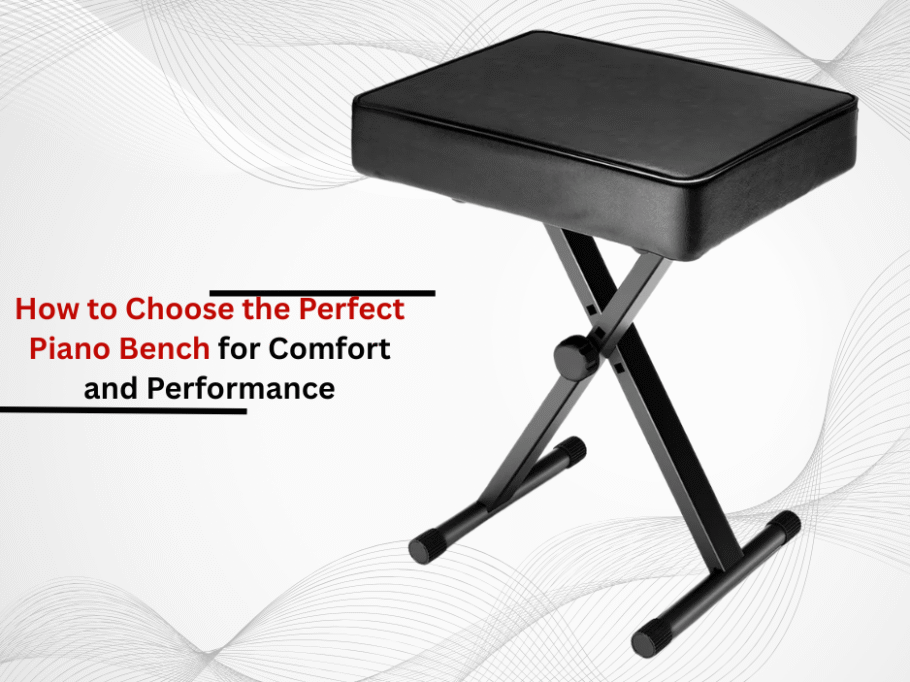A piano bench is more than a simple seat; it transforms the experience of a musician. The bench affects posture, endurance, and technical practice precision during practice or performance. Like most things in life, a piano bench has its pros and cons. Lack of proper research to find an optimal adjustable piano bench can result in chronic discomfort, misalignment, or even repetitive strain injuries over a long period of time. Fine details like adjustable features of the piano bench, the quality of material used in its construction, and ergonomic design need to be factored in to make sure the bench complements the pianist’s physique and style of play. From ergonomic aspects and material longevity to cutting-edge features provided by industry frontrunners, this piece aims to address different angles pertaining to choosing a piano bench. Knowing these details helps in finding a bench tailored to specific needs that effortlessly combines comfort, usability, and durability.
To know more, Read: Cheap vs. Expensive Keyboard Benches: Is Price a Factor?
Important Factors to Think About
Ergonomics and Posture Support:
The ideal position while sitting on a piano bench involves the feet flat on the ground, the knees bent at a 90-degree angle, and the spine straight. To prevent slouching and shoulder or wrist strain, ergonomic design is a must. For long practice sessions, benches with slight contours and lumbar support and those with ergonomic features are recommended.
Adjustability
Height adjustability is particularly important for shared or multi-user desks where precise positioning is needed. Enhanced freedom of movement is offered with hydraulics or spindle-based benches and they ensure the user’s forearms rest level with the keyboard. Fixed-height piano benches are ideal for a single user but lack versatility.
Material and Durability
For lasting durability, quality materials such as heavy-duty steel, leather upholstery, and hardwood frames are ideal. Moisture-resistant fabrics, reserve cushions that are too soft for better control, and dense padding and strong fabrics provide better supported structures while adjusting to different climates and offer enduring durability.
Stability and Weight Capacity
The base of the bench is sturdy and padded with non-slip rubber caps to prevent movement, unlike other models during playing. The weight limit has to suit the user’s requirement, and with industrial-grade benches, these go up to 400 pounds. Those of lightweight or wobbly design do not distract from performance precision.
Adjustment of Height of Benches
Adjustable Benches:
These are versatile to accommodate different users because they come with knobs and levers that increase or reduce height. They are most convenient for teachers, family members, and school performers who appreciate customization. Their only downside is checking if the mechanical components function smoothly and are durable.
Fixed-Height Benches:
These are the simplest and most stable traditional benches. They are well known to match well with the aesthetic of classic pianos. They are economical but best suited for static seating planners or those who set it up once per day.
Duet Benches:
These are wider in design to allow for two players, hence suitable for duets or lessons. The extra space requires proper allocation of padding to guarantee that the two users can maintain proper posture.
Artist Benches:
These let the users rest their arms at a comfortable height. This premium range offers professional’s grade crafted from luxury materials that feature advanced adjustability. They add memory foam padding along with reinforced joints for distinguished musicians who desire comfort.
Enhancing Comfort and Functionality
Padding and upholstery:
Breathable upholstery contains fabrics such as wool or microfiber, which reduce overheating, while high-density or memory foam cushions offer comfort. Durable leather may crack if not kept in good condition from time to time.
Storage options:
Benches may come with compartments set aside for accessories or even sheet music. While convenient, added storage may increase weight or reduce padding thickness, so there must be a balance between comfort and utility.
Portability:
Musicians traveling for gigs will benefit from lightweight models with handles or folding legs, but frequent use should not compromise portability; this may hurt the structure.
Testing and Maintaining Your Piano Bench
Testing Before Purchase:
Wherever possible, the bench should be tested personally so as to assess for comfort and stability. Adjustable mechanisms should not jolt, stick, or make noise when being adjusted.
Maintenance Tips:
Preserving upholstery without excess wear and tear can be done through regular cleaning with the right products. While bolts tend to become loose over time, joints may need some lubricating. Sunlight and humidity may fade and warp the material, so the machinery should be kept covered. With lowering material quality, ergonomic design should be prioritized. The best piano bench is one suited to personal needs and will enhance comfort while improving performance.
Conclusion
Finding the perfect ergonomic and adjustable positioning with a piano bench is critical. Companies like Donner, 5 Core, and On Stage have pioneered the field, showcasing countless years of effort and industry innovation. As the years march forward, these innovations in design and technology will likely come together with the use of sustainable materials or smart adjustability features. While today’s frontrunners are defining the market, the ecosystem of piano accessories encourages musicians to imagine the future of compositional artistry blended with comfort, expecting the unexpected.




